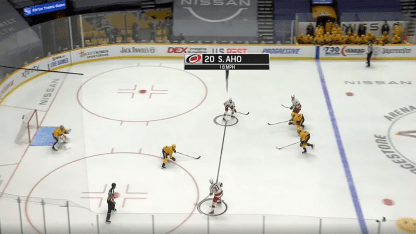"We never submitted anything and were kind of a little bit surprised by it, but in a good way," Lehanski said. "We just kind of suddenly got a tap on a shoulder, and it was like, 'Guys, you've done the best job in innovating in sports.' … [The award] was for not only the design and architecture of the technology solution, but the impact that it has on the sport."
The NHL fully installed its puck and player tracking technology and branded it NHL Edge this season. Each of the 32 arenas has 14-16 infrared cameras that track sensors in pucks and jerseys throughout each game, generating data for teams, media and fans.
Lehanski said the NHL is well into the process of gathering quantifiable data.
"I think one full season is a pretty good sample set for that part of it, to sort of audit the data, and now we're on the precipice of really using it to come up with new analytics," Lehanski said.
The NHL is sending the raw data to the NHL Players' Association and the teams, as well as to its TV broadcast partners -- Rogers in Canada, ESPN and Turner in the United States.
"Right now the data's being shared with a lot of people to look at it and determine what people want and what makes sense," Lehanski said.
The teams can use the SAP-NHL Coaching Insights App for iPad, which displays real-time information like ice time, possession time, shot location and face-off percentage with user-friendly displays and customizable filters. Each team has unlimited access to two iPad Pro devices with the app and game-day access to two more.
The NHL is curating graphics for its TV partners with Amazon Web Services and SportsMEDIA Technology, the company that built the puck and player tracking system.





